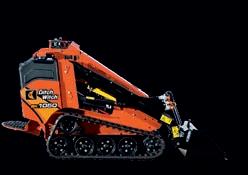TheConcernGrowing
A PUBLICATION OF THE OHIO LANDSCAPE ASSOCIATION



Cleary Brothers Landscaping




Cleary Brothers Landscaping
In today’s world, security threats are constant, so businesses need to make the safety of their premises a top priority, both indoors and outdoors. For shops and yards, where valuable inventory, equipment, and materials are often kept, having a strong security plan is not just a good idea, but essential. This article will delve into the important aspects of evaluating and planning for shop and yard security to prevent theft, vandalism, and unauthorized access.
Before developing a security plan, it is essential to conduct a thorough assessment of the specific risks facing your shop and yard. Factors such as the geographical location, surrounding environment, and the nature of your business should be carefully considered to identify potential vulnerabilities. For instance, urban settings may be more susceptible to theft, while rural locations could face challenges related to unauthorized entry due to limited visibility.
1. Perimeter Security: Begin by evaluating the perimeter of your shop and yard. Are fences intact and of adequate height? Are there vulnerable points such as gaps or areas where fencing is low or damaged? Consider installing sturdy fencing with anti-climb features to deter trespassers.
2. Access Points: Identify all entry and exit points to your premises. Are doors, gates, and windows secured with robust locks? Consider upgrading to smart locks or installing additional security features like alarms or cameras to monitor these areas effectively.
3. Lighting: Adequate lighting is critical for both deterrence and surveillance. Ensure that all areas of your shop and yard are well-lit during nighttime hours. Motion-activated lights can be particularly effective in alerting you to potential intrusions.
continued on page 6
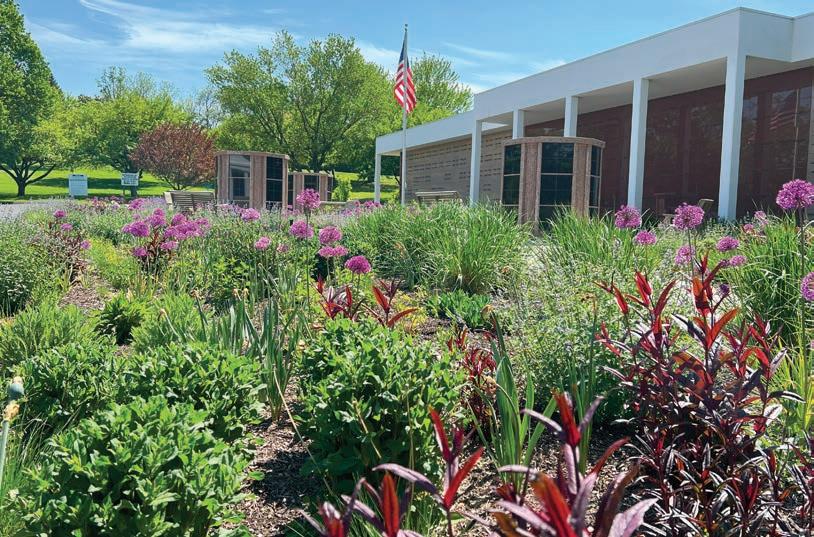
FEATURES
COVER: 2023 Landscape Ohio! Awards Merit Award winner, Blooming Designs, for their entry in the category of Specialty Gardens.
PRESIDENT’S COLUMN
Securing Your Shop & Yard: A Comprehensive Evaluation and Plan
PERENNIAL FOCUS
Lonicera Sempervirens: Honeysuckle Vine
FISCAL FITNESS
401(k) Vs. Roth IRA
FOR SAFETY SAKE
Practicing Lockout/Tagout Procedures When Servicing Equipment
AND THE WINNERS ARE...
2023’s Landscape Ohio! Award Winners & More
PLANT OF THE MONTH
Physocarpus opulifolius: Eastern Ninebark
FEATURE ARTICLE
How to Scale Your Landscape Business the Right Way
FEATURE ARTICLE
Thinking of Selling Your Landscape Business?
DIRECTIONS
ADVERTISING INDEX WELCOME
OHIO’S PROFESSIONAL GREEN INDUSTRY ASSOCIATION
OHIO LANDSCAPE ASSOCIATION
9240 Broadview Road
Broadview Heights, Ohio 44147
Phone: 440.717.0002
Toll Free: 1.800.335.6521
Web: www.ohiolandscapers.org and www.myohiolandscape.com
DESIGNER / EDITOR
Rick Doll
REGULAR WRITERS
Michael J. Donnellan, M3 Wealth Management
Dr. Jim Funai, PhD., Cuyahoga Community College
Shelley Funai, Stan Hywet Hall and Gardens
Cameron Maneri, Cleary Brothers Landscaping
Sandy Munley, Ohio Landscape Association
Bobbie Schwartz, FAPLD, Bobbie’s Green Thumb
ADVERTISING INFORMATION
Submission deadline: 10th of the month, prior to the month of magazine publication. For advertising rates and ad specs, please call 440.717.0002, or email Rick Doll Jr. at rick@ohiolandscapers.org.
DISCLAIMER
The Ohio Landscape Association, its board of directors, staff and the editor of The Growing Concern neither endorse any product(s) or attests to the validity of any statements made about products mentioned in this, past or subsequent issues of this publication. Similarly, the opinions expressed in The Growing Concern are those of the authors and do not necessarily represent the views of the Ohio Landscape Association.
OFFICERS
President
Cameron Maneri
President – Elect
Ryan Drake
Treasurer
Brandon Barker
Immediate Past President
Stephanie Gray, LIC
DIRECTORS
Amy Gatoo
Philip Germann
Matt Malone
Tim McCaskey











Bob Ramser, LIC
Tom Rieder, LIC





UPCOMING OLA MEETINGS, EDUCATION SEMINARS & EVENTS
JULY 9, 2024
PLANT I.D. CLINIC (Central Ohio)
This clinic is a hands-on training opportunity for you and your crews covering the basics of Plant ID for plants typically used in Ohio. Sponsored by Willoway Nurseries.
JULY 11, 2024
PLANT I.D. CLINIC (N.E. Ohio)
This clinic is a hands-on training opportunity for you and your crews covering the basics of Plant ID for plants typically used in Ohio. Sponsored by Davis Tree Farm & Nursery.
JULY 18, 2024
INDUSTRY NETWORKING MEET-UP
OLA’s Women in Landscape Group was created for the purposes of connecting, empowering, and advocating for women in the landscape industry, while amplifying the voices of our current & future women leaders. See sidebar (right) for more details.
AUGUST 1, 2024
OLA SCHOLARSHIP GOLF CLASSIC
Join us at Mallard Creek Golf Club for the OLA’s 24th Annual Scholarship Golf Classic! Our golf outing was created to help generate funding for our scholarship program, targeting qualified students interested in a vocation within the green profession. Call the OLA at 440.717.0002 for available sponsorship opportunities. See page 7 for more info.
cont.
AUGUST 23, 2024
SNOW & ICE MANAGEMENT CLINIC
Whether you’re an owner, operations manager, dispatcher, or anyone in between, the OLA’s annual snow and ice management clinic is a can’t miss event for any company focused on improving how they handle the “white side” of their business.
SEPTEMBER 10, 2024 (TENTATIVE)
PLANT HEALTHCARE DAY
This full-day workshop combines all aspects of Plant Health Care (PHC) for both technicians and managers, with live demonstrations of PHC techniques. Held at Secrest Arboretum, located in Wooster, OH.
SEPTEMBER 19, 2024
NE OHIO FACILITY TOUR (Green Impressions)
Founded in 1988 by George Hohman, their dedication to detail and healthy client relationships quickly led to Turfscape’s first location opening in 1989. By 1999, the company began to thrive, building a headquarters in Twinsburg, a second location in Independence (2004) and a third in North Canton (2013). Join us as we tour Turfscape’s headquarters, located in Twinsburg, Ohio, to find out what has made them so successful for over 35 years. Registration opens August 2023.


The OLA’s Green Industry Professional Group was created to provide a platform to connect, share experiences, and exchange ideas with peers in our industry, within the state of Ohio. Everyone is invited to join this FREE networking group focused on connecting people who are on a similar career paths and want to share thier passion for our industry.
Our first meeting of 2024 is scheduled for Thursday, July 18th and will be a very informal event. Have a few beers and unwind after the hectic spring rush!
EVENT INFORMATION
DATE & LOCATION
JULY 18, 2023
BREW WALL 1350 W ROYALTON RD, BROADVIEW HEIGHTS, OH 44147
AGENDA NETWORKING
3:00PM TO 5:00PM
COST TO ATTEND NONE
FOOD/BEVERAGE: ATTENDEES ARE RESPONSIBLE FOR YOUR OWN FOOD & BEVERAGE PURCHASES.
REGISTER TO ATTEND BY JULY 11, 2024
ABOUT BREW WALL
BrewWall is proud to offer rotating craft beers, wines and sours on tap. Thier craft beer colour spectrum is pale, gold, amber, copper brown and black. All wines are served at proper temperatures and you will never have to deal with an over oxidized wine at the BrewWall. If beer or wine is not your thing, no problem. They have a wide selection of food and spirits available.
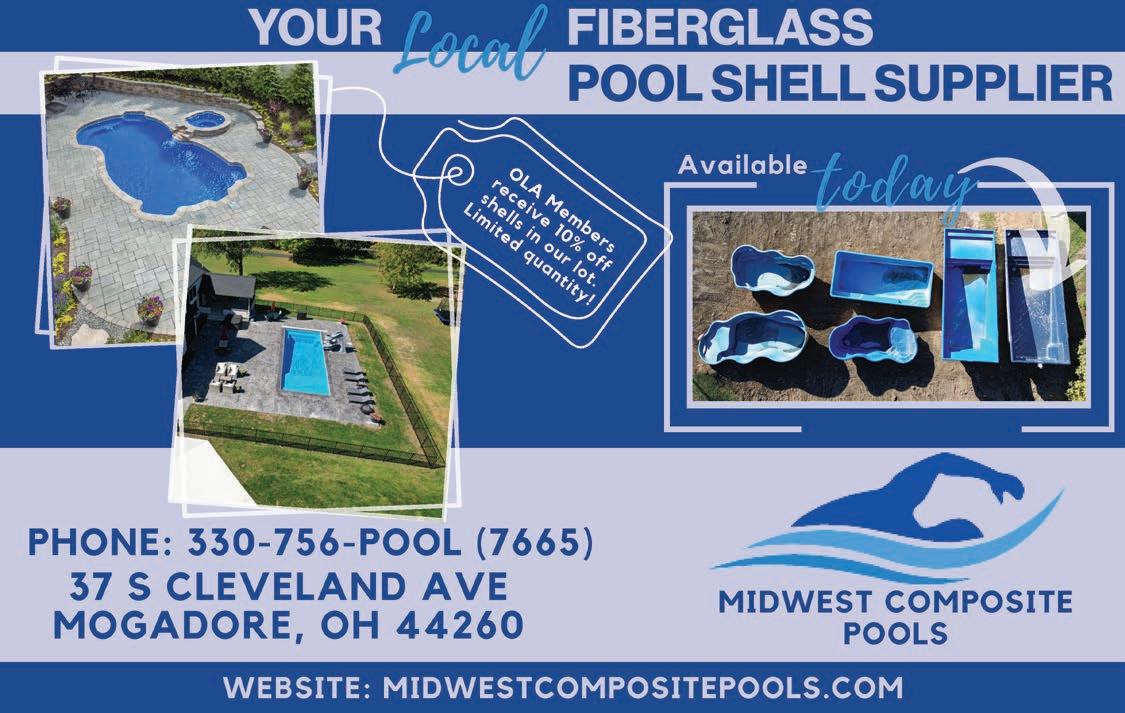
continued from page 3
4. Surveillance Cameras: You should install surveillance cameras strategically to cover vulnerable areas such as entry points, parking lots, and areas with highvalue assets. Modern CCTV systems can provide live monitoring and recording capabilities, enhancing your ability to respond to security incidents promptly.
Once you have identified vulnerabilities and assessed risks, it’s time to develop a comprehensive security plan tailored to your specific needs. A well-designed plan should encompass both physical security measures and operational protocols to mitigate risks effectively.
1. Access Control: Implement a strict access control policy that includes measures such as key card access, biometric identification, or PIN codes for entry into restricted areas. Limit access permissions based on roles and responsibilities to minimize the risk of unauthorized entry.
2. Alarm Systems: Invest in a reliable alarm system that integrates with your surveillance cameras and notifies you and local authorities of any unauthorized access or
security breaches. Test your alarm system regularly to ensure its functionality.
3. Inventory and Asset Management: Maintain accurate records of inventory and assets stored in your shop and yard. Use asset tagging or tracking systems to monitor the movement of high-value items and deter theft.
4. Employee Training: Educate your employees on security protocols and procedures. Conduct regular training sessions to raise awareness about potential security threats and ensure that all staff members know how to respond in the event of an emergency.
5. Emergency Response Plan: Develop a detailed emergency response plan that outlines steps to be taken in case of security incidents such as break-ins, vandalism, or unauthorized access. Include contact information for local law enforcement and emergency services.
Advancements in technology provide additional layers of security to enhance the effectiveness of your security plan. continued on page 8




continued from page 6
1. Remote Monitoring: Use mobile apps or web-based platforms to monitor your shop and yard remotely. This allows you to keep an eye on your premises even when you are not physically present.
2. Smart Sensors and IoT Devices: Deploy smart sensors and Internet of Things (IoT) devices to detect motion, temperature changes, or other anomalies in real time. These devices can trigger alerts and notifications to your security team or local authorities.
3. Cloud-Based Storage: Store surveillance footage and other critical data securely in the cloud. Cloud-based storage solutions offer scalability, accessibility, and redundancy, ensuring that your data is protected from physical threats such as theft or vandalism.
Security is an ongoing process that requires regular evaluation and adaptation to emerging threats and changing circumstances.
1. Regular Security Audits: Conduct periodic security audits to identify any new vulnerabilities or areas for improvement. Solicit feedback from employees and
stakeholders to ensure that security measures remain effective and relevant.
2. Stay Informed: Stay informed about the latest trends and developments in security technology and best practices. Networking with other businesses and security professionals can provide valuable insights and recommendations.
3. Review Incident Reports: Analyze incident reports and security breach logs to identify patterns or recurring issues. Use this information to refine your security plan and implement corrective actions as needed.
Securing your shop and yard requires a proactive approach that combines physical security measures, operational protocols, and technological innovations. By conducting a thorough assessment of risks, developing a comprehensive security plan, and integrating advanced technology, businesses can effectively protect their assets, employees, and reputation from security threats. Remember, security is not a one-time effort but an ongoing commitment to safeguarding your business operations and assets in an increasingly uncertain world.



As a landscape and garden designer, I am always searching for plants that will do well in dry sun. Although Lonicera sempervirens is not a perennial, it is a useful addition to the perennial garden as a background. I have long admired a Honeysuckle Vine on the fence of one of my clients. While some Honeysuckles are not native and are very invasive, that is not true of this one. This one has actually been designated by Lake Erie Allegheny Partnership (LEAP) for Biodiversity as an Ohio Native Plant of Distinction for 2024. It is native to North America and possibly native to Ohio. The Shawnee State Forest vine is one that most botanists accept as native and there are some vines in Butler County that appear native as well.
The cultivar that I have admired is ‘Major Wheeler’. This profuse bloomer is covered with a continuous display of red
orange flowers from late spring through the end of summer and well into the fall. Hummingbirds seem to love it. Perhaps they are attracted by the sweet fragrance as well as the color of the long tubular flowers. The green foliage is resistant to mildew.
Other cultivars are ‘Blanche Sandman’ (similar in color to ‘Major Wheeler’ but with a yellow interior) and ‘John Clayton’ that sports golden-yellow flowers. All three of these culitvars are strong growers – usually 5-8 feet high and wide – and appreciate strong support. If they grow larger than desired, the best time to prune is after they finish blooming (usually late summer/early fall) because flowers appear on the previous years’s growth.
continued on page 12


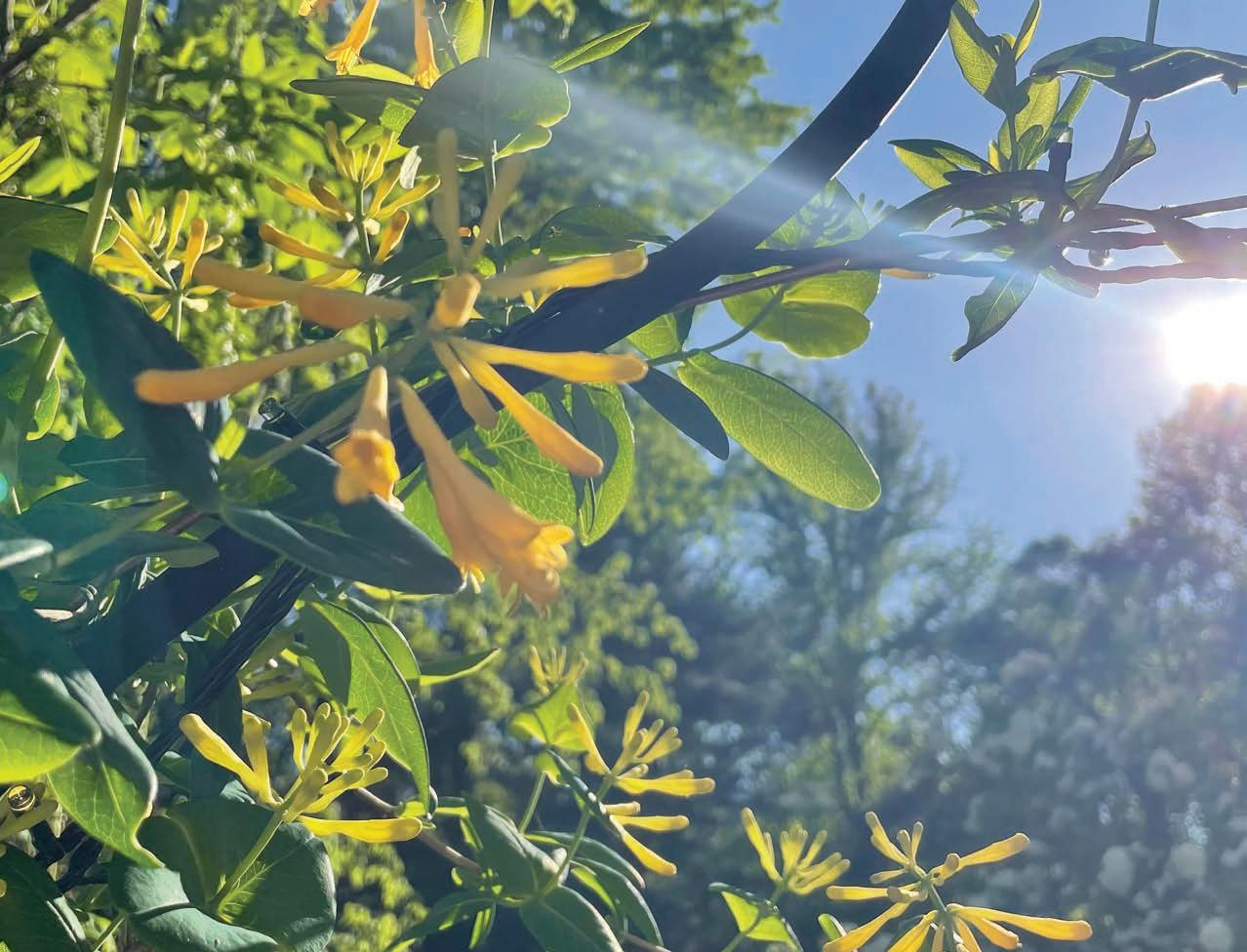
continued from page 10
To do so, simply cut the flowered shoots back by a third, to make the display tidier next year. You can also cut off any dead or diseased wood back to healthy growth to improve the condition and overall look of the plant. However, leave dead flower heads if possible, as these will turn into berries that the birds will eat. In the spring, many birds use the tangle of branches as shelter into which they can build their nests.
To fully enjoy this wonderful vine and satisfy your clients’ craving for native plants, use it in your designs. Be sure to plant it in full sun and average to loamy, well-drained soil. It is quite drought tolerant once established.
Bobbie Schwartz, FAPLD, owner of Bobbie’s Green Thumb in Shaker Hts., Ohio, is a landscape designer, consultant, freelance writer, and lecturer whose specialties are perennial gardens and four season landscapes. In addition to being an Ohio Landscape Association (OLA) member, she is an active member of the Ohio Nursery and Landscape Association (ONLA) and Perennial Plant Association (PPA). Bobbie is a Past President of the Association of Professional Landscape Designers (APLD).
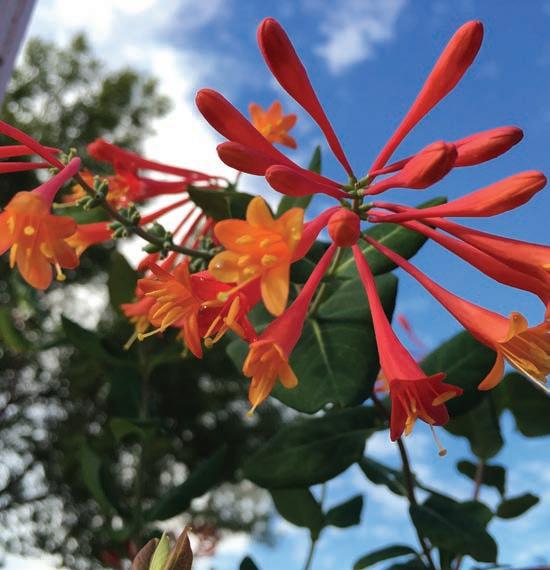


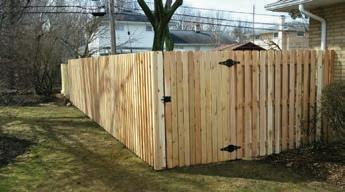
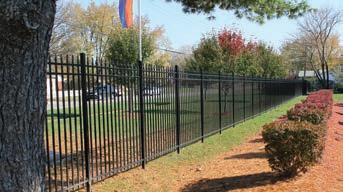
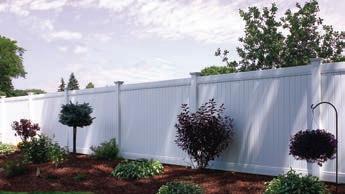




MICHAEL J. DONNELLAN M3 Wealth Management
Here is a question I have been asked many times in the past couple years…”I contribute 10% to my 401(k) and my employer matches the first 4%. I also contribute to a Roth IRA. Should I just contribute to one or the other?”
401(k)s and Roth IRAs each offer something worthwhile, but slightly different and having both in your retirementplanning might be better than having just one.
Among the many advantages 401(k)s offer is that they make saving for retirement easy. The money comes right out of your paycheck. You also get an immediate tax break in that the money you contribute isn’t taxed until you withdraw it, preferably during retirement. Most employers match funds, perhaps the first 4% of what you contribute. Finally, 401(k)s have relatively high contribution limits. Federal law allows you to contribute up to $23,000 in 2024, plus up to an additional $7,500 if you’re 50 or older.
So, a 401(k) clearly should be a cornerstone of your retirement planning. Many 401(k) plans are now offering a Roth component. But what if the 401(k) does not have the option to contribute to a Roth 401(k)?
A Roth IRA has some great features. You don’t get a tax break upfront since you’re investing after-tax dollars, but you do
get one at the end. Additionally, you can withdraw your contributions and earnings tax-free provided you meet the withdrawal requirements.
The Roth IRA contributions limits are lower than those in a 401(k) - $7,000 in 2024, plus another $1,000 if you’re 50 or older. Of course, you’ve got to meet the eligibility requirements (phased out at $161,000 Adjusted Gross Income if single: $240,000 AGI if filing married) to contribute.
A Roth IRA Conversion is yet another idea. You take money out of an IRA and place it into a Roth IRA. Now, the amount withdrawn is taxable, so you’ll need to be aware of moving into higher tax brackets.
The reverse is true of a Roth, where you’re paying tax on your contribution today and avoiding taxes in the future. Thus, a Roth is a better deal when you expect your taxes will be higher in the future since you’re paying the lower tax bill today instead of tomorrow’s higher one.
continued on page 16
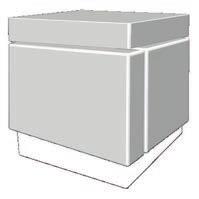


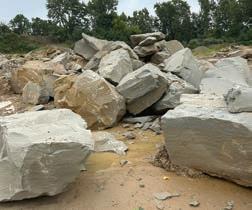
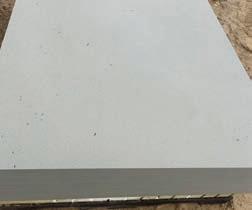

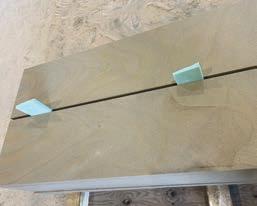
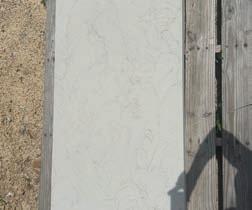
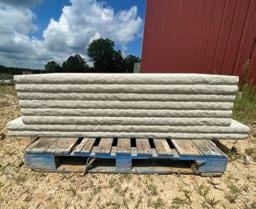



continued from page 14
We can never be certain whether our tax rate will be higher or lower in the future. Even if you expect that your income will be lower in retirement, you may also lose lots of deductions (mortgage interest, retirement-plan contributions) that could result in a higher rate.
But by putting money in both a 401(k) and a Roth IRA, you’re hedging your bets. Having different pots of money taxed different ways gives you more flexibility in managing your income in retirement. If, for example, withdrawals from a 401(k) combined with Social Security and other income are about to push you into a higher tax bracket in a given year, you can always dip into your Roth. So, how can you maximize the advantages of both these savings plans?
Start by contributing enough to your 401(k) to get the full employer match. This will give you the best bang for your 401(k) bucks: the convenience of payroll deductions, the upfront tax break and your employer’s matching funds (free money).
Next, contribute as much as you can to a Roth IRA, up to the limit. By taking this step, you get the advantage of tax-free withdrawals down the road, plus you get the tax diversification. If you still save more money after this, then funnel your additional savings into your 401(k) until you reach the contribution limit. You won’t be getting the bonus of an employer match, but you’ll still get the convenience of payroll deductions, plus your money will grow without the drag of taxes until you withdraw it.
In any case, that’s the strategy in a nutshell: do the 401(k) to the full match, then the Roth, back to the 401(k) and, if you can save still more, look for good options in taxable accounts. If you do this on a regular basis, you should not only have a nice
fat nest egg when you retire, you should also gain some decent maneuvering room for reducing the tax bite on withdrawals from that nest egg during retirement.
And having retirement funds in both types of accounts sets the stage for flexibility in withdrawals in retirement. If a retiree needs $4000 per month in distributions, they can manage their tax situation by taking amounts from both pots of retirement savings. Take $2500 from the Traditional IRA/401(k) and $1500 from the Roth, and only the $2500 is taxable, possibly avoiding a higher tax bracket.
Consult with your financial and tax professionals for information specific to your individual situation.
Scenarios illustrated are hypothetical in nature, results may vary. Investing is subject to risk which may involve loss of principal. Past performance is not indicative of future results.
The M3 Wealth Management Office does not provide legal or tax advice. Consult an attorney or tax professional regarding your specific situation. The information herein is general and educational in nature and should not be considered legal or tax advice.
Michael J. Donnellan specializes in stock selection and retirement planning. Feel free to contact him with any questions or comments at the M3 Wealth Management office at 17601 W. 130th Street – Suite 1 in North Royalton, Ohio. Phone number (440) 652-6370 / Email: donnellan@m3wealthmanagement.com
Securities and advisory services offered through L.M. Kohn & Company
Registered Broker/Dealer Member FINRA/SIPC/MSRB 10151 Carver Rd. Suite 100 – Cincinnati, Ohio 45242 (800) 478-0788

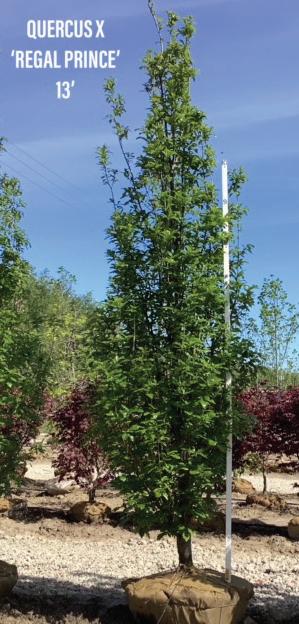

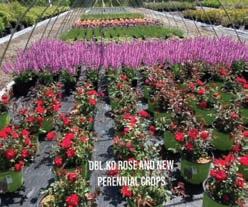
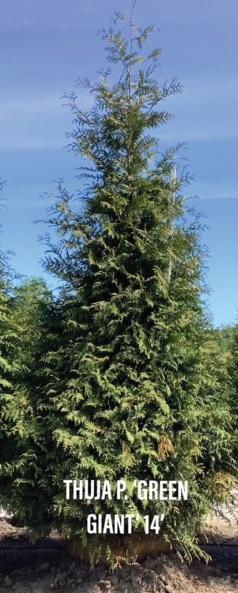




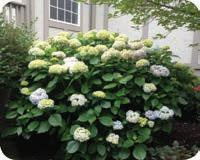




As cleaning, maintaining and repairing equipment is a normal part of a lawn or landscape company’s operations, it’s important to practice lockout/tagout procedures during these tasks.
Lockout means placing a lock on a machine to prevent it from unexpectedly starting or energizing during service or repair. A lock might also prevent stored energy from being released. Tagout means placing a warning tag on a switch or other shutoff device to warn others not to start the machine. Always use lockout and tagout together.
OSHA identifies landscape industry workers as one of the groups facing the greatest risk from the hazard of equipment unexpectedly starting or releasing stored energy, which can result in serious injuries or death.
Hazardous energy is any type of energy in sufficient quantity to cause energy to a worker. Common sources of hazardous energy
include electricity, mechanical motion and pressurized air. It can result in injuries such as electrocution, burns, crushing, cutting, lacerating, or fracturing body parts.
Compliance with lockout/tagout procedures prevents an estimated 120 fatalities and 50,000 injuries each year. Workers exposed to hazardous energy lose an average of 24 workdays for recuperation, according to OSHA.
Develop and implement a written hazardous energy control program, including lockout/tagout procedures, employee training, and inspections before any maintenance or service work is done.
continued on page 20

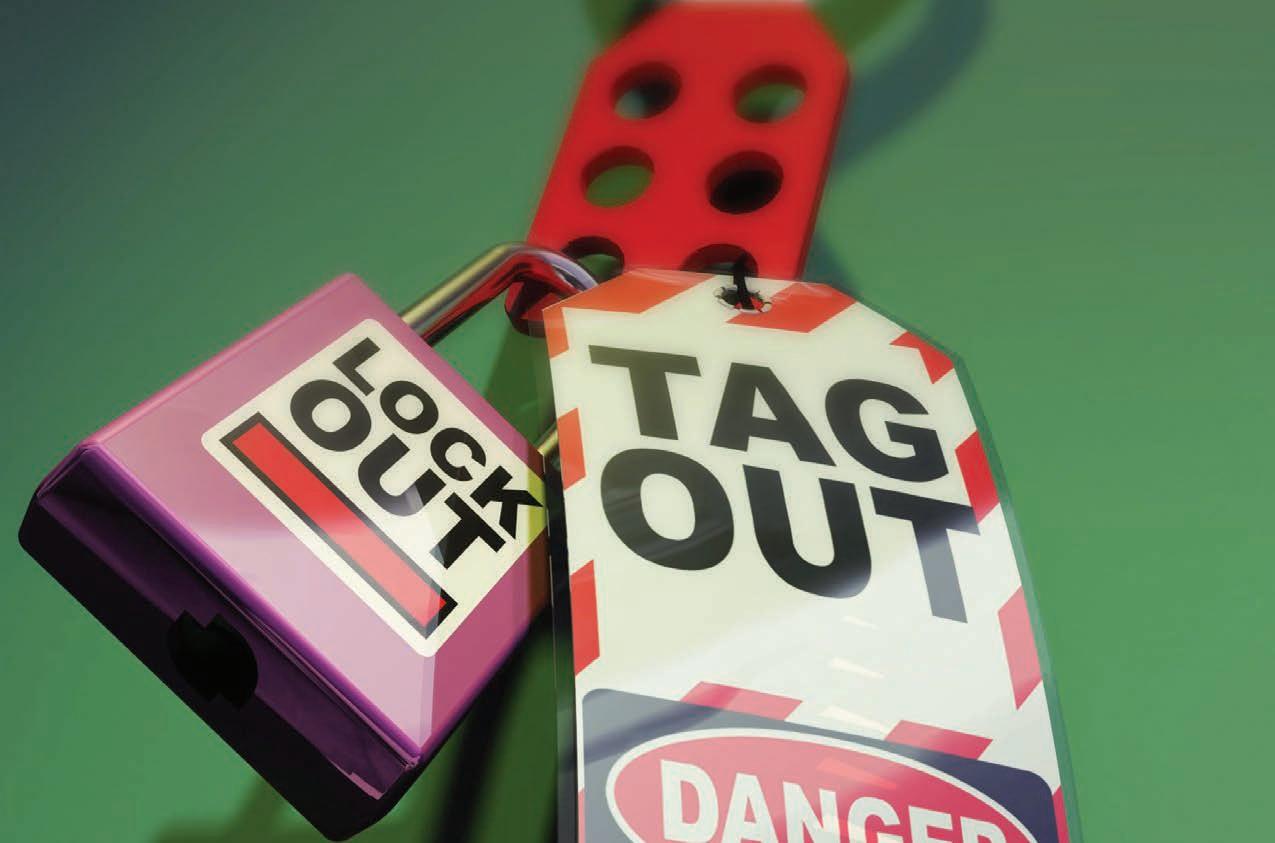
continued from page 18
Lockout/tagout procedures should be implemented when workers are servicing and maintaining equipment and unexpected startup of the machine or release of stored energy could occur.
It should also be implemented during normal production if a worker must remove or bypass a guard or safety device or if the worker has to place any part of their body into the danger zone or near the machine’s point of operation.
All employees who are authorized to service and maintain equipment need to be trained to recognize hazardous energy sources and the methods of isolating and/or controlling energy.
1. Notify everyone on the jobsite that the machine will be locked for service.
2. Use blocking techniques to immobilize the machine. Chock the wheels, if necessary.
3. Remove the ignition key.
4. Bleed hydraulic or pneumatic systems to release pressure or vacuums and release or block any other stored energy.
Hydraulically raised components of a machine could fall during repair/maintenance. Lower components or support them in the raised position.
5. Exercise the controls and steering to let off any pressure that’s stored in the control lines.
6. Apply the appropriate lockout device.
7. Post tags to highly visible positions in the cab or near the controls to warn others not to operate the equipment. Use as many tags as necessary.
8. Turn off the main disconnect switch, remove the key, and lock the access door. Apply a tag to this compartment also.
9. Lock the cab, if appropriate.
10. Disconnect the machine from energy sources. This might be as simple as removing the negative battery cable from the battery post.
11. Try to restart the equipment to ensure that it is secured.
12. Move implement controls left and right and up and down again to release any hydraulic pressure still in the system.
13. After the repair, remove locks and tags, reconnect energy sources, restart the engine, and check to make sure everything is operating correctly.
This article appeared on the Alloy Employer Services blog, located at www.alloyemployer.com/blog. Alloy Employer Services is an innovation leader in Risk Management helping clients to successfully manage their workforce and the worksite risks they face leading to reduced cost, simplified administration, and improved outcomes. Alloy manages workers compensation, employee benefits, and other core HR functions for its clients with operations across the country.
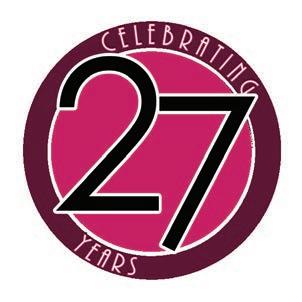
Each year, since 1992, the OLA Board of Directors selects a deserving individual to receive the Lifetime Dedication and Contributions to the Landscape Industry Award. This year, the OLA recognizes Kimberly J. Sayers as the 33rd recipient of this prestigious award.
Kim was born to Arthur and Norma Jean Todd in Wooster, OH. She is the youngest of her siblings, Jim, Vickie, and Jeff. She was raised on land about 10 miles west of Wooster that was part of her grandparent’s farm, where her mom was born.
Strong work ethic and helping others was the Todd’s way of life. They had a garden that was big enough to feed their family of six year-round.
Kim graduated from Triway High School and went on to the College of Wooster where she earned a Bachelor’s Degree in Psychology. She then attended The Ohio State University earning a Master of Arts Degree in College Student Affairs and Higher Education Administration.
Kim graduated from the College of Wooster in May of ’87, and married her husband, Jeff, on August 8th that same year. They moved into their first home: an apartment in Morrill Tower, right beside Ohio Stadium, best known as ‘The Shoe.’
In 1989, Kim was hired as Continuing Education Coordinator at ATI and several years later transitioned to Director of Business Training & Educational Services.
In her early years, there was very little support for this non-traditional entity. In fact, there was quite a bit of opposition to the idea of non-credit classes, offering training off-campus, and at times, outside of the traditional college schedule.
Kim worked diligently to gain the support of a handful of faculty members who were key influencers on campus. Gradually, more and more faculty and staff were willing to try something outside of their comfort zones and almost 35 years later, she is still there bringing industry and education together!
In the mid ’90s, Kent Hammond showed up in Kim’s office one day and said: “I want to bring the ALCA Certified Landscape Technician Test to Ohio.” Kim agreed to help!
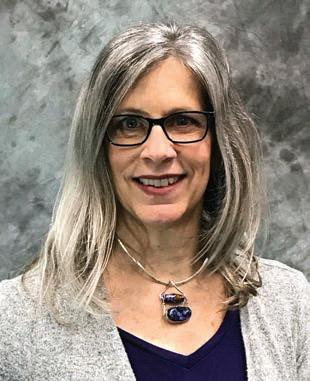
Kim became the Ohio Test Administrator and for more than 20 years kept the program on track, managing the test site, the registration, housing for judges, the volunteers, and countless other details needed to put on the test. She did this all as a volunteer.
Kim was key in making Ohio one of the top tests in North America and was instrumental in establishing a strong community centered around the test. The national association recognized Kim and Ohio’s efforts and referred other states to call her for help and to visit our test site to learn how to be successful.
She is an active member of numerous organizations – too many to list here –and functioned as a leader in every group, serving in roles such as president, vicepresident, chairperson, invited speaker, board member and more!
Congratulations, Kim, on receiving this prestigious award!
RESIDENTIAL MAINTENANCE
SPONSOR: ALVORD’S YARD AND GARDEN
AWARD OF MERIT
Rice’s Landscapes Redefined
A Residence in Lake Township
COMMERCIAL MAINTENANCE
SPONSOR: EMMETT EQUIPMENT COMPANY
AWARD OF HONOR
Environmental Management Inc.
The Grandview Yard


RESIDENTIAL INSTALLATION, CATEGORY I
SPONSOR: BIGFOOT LANDSCAPE SUPPLY
AWARD OF HONOR
Lifestyle Landscaping, Inc.
A Residence in Bay Village
AWARD OF MERIT
KGK and Company
A Residence in Cuyahoga Falls


RESIDENTIAL INSTALLATION, CATEGORY II
SPONSOR: M.H. EBY
AWARD OF MERIT
Lifestyle Landscaping, Inc.
A Residence in Strongsville
AWARD OF MERIT
The Bremec Group
A Residence in Shaker Hts.


RESIDENTIAL INSTALLATION, CATEGORY III
SPONSOR: WILLOWAY NURSERIES
AWARD OF MERIT
The Bremec Group
A Residence in Novelty
AWARD OF MERIT
Ground Works Land Design
A Residence in Westlake


RESIDENTIAL INSTALLATION, CATEGORY IV
SPONSOR: LAKE COUNTY NURSERY
AWARD OF MERIT
Exscape Designs
A Residence in Chesterland




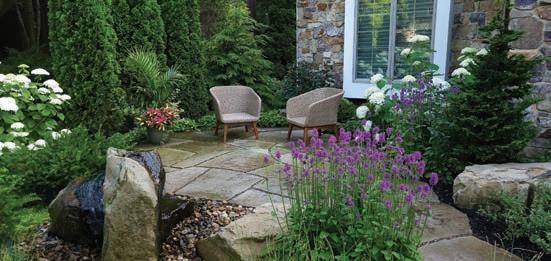
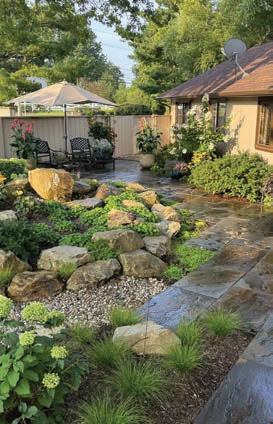

RESIDENTIAL INSTALLATION, CATEGORY V
SPONSOR: DAVIS TREE FARM & NURSERY
AWARD OF HONOR
KGK and Company
A Residence in Hudson
AWARD OF MERIT
Rice’s Landscapes Redefined
A Residence in Lake Township
AWARD OF MERIT
Ottawa Landscapes
A Residence in Dublin



RESIDENTIAL INSTALLATION, CATEGORY VI
SPONSOR: VALLEY CITY SUPPLY
AWARD OF HONOR
Green Impressions Landscaping
A Residence in Avon
AWARD OF MERIT
Rice’s Landscapes Redefined
A Residence in Poland
AWARD OF MERIT
KGK and Company
A Residence in Hunting Valley
AWARD OF MERIT
Green Impressions Landscaping
A Residence in Westlake




COMMERCIAL INSTALLATION, CATEGORY I
SPONSOR: EARTH ‘N WOOD
AWARD OF MERIT
#1 Landscaping
Quadax, Inc.
AWARD OF MERIT
Suncrest Gardens, Inc.
Summit Cty. Developmental Disability Board


COMMERCIAL INSTALLATION, CATEGORY II
SPONSOR: PETITTI FAMILY OF FARMS
AWARD OF MERIT
KGK and Company
Highfields Event Center
AWARD OF MERIT
Environmental Management Inc.
University Square at 15th & High
Project

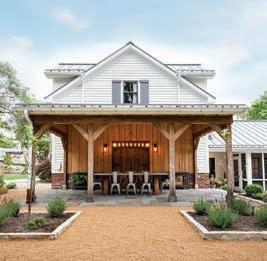






AWARD OF MERIT
Environmental Management Inc. The Easton Urban District

WATER FEATURES
SPONSOR: BEDFORD GLENS GARDEN CENTER
AWARD OF HONOR
The Bremec Group
A Residence in Moreland Hills
LANDSCAPE LIGHTING
SPONSOR: WOLF CREEK COMPANY
AWARD OF HONOR
Northern Territory Lighting
A Residence in Hinckley
AWARD OF MERIT
#1 Landscaping
A Residence in Wadsworth
AWARD OF MERIT
Landscapes by Terra
A Residence in Dublin
GARDEN STRUCTURES/PAVEMENTS, I
SPONSOR: OBERFIELDS
AWARD OF MERIT
Weidner Creative
A Residence in Elyria
AWARD OF MERIT
McCaskey Landscape & Design
A Residence in Chardon
GARDEN STRUCTURES/PAVEMENTS, II
SPONSOR: UNILOCK OHIO, INC.
AWARD OF HONOR
Rice’s Landscapes Redefined
A Residence in Green
AWARD OF MERIT
Executive Landscaping
A Residence in Poland

AWARD OF MERIT
Sasak Landscaping, Inc.
A Residence in Cuyahoga Falls




















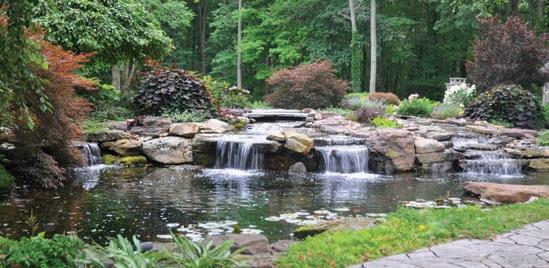



AWARD OF MERIT
Landscapes by Terra
A Private Residence in Dublin





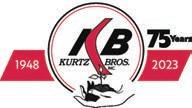

SPONSOR: BIGFOOT LANDSCAPE SUPPLY
AWARD OF HONOR
Landscapes by Terra
A Residence in Dublin
AWARD OF MERIT
Landscapes by Terra
A Residence in Columbus
AWARD OF MERIT
#1 Landscaping
A Residence in Wadsworth



SPONSOR: BIGFOOT LANDSCAPE SUPPLY
AWARD OF HONOR
Sasak Landscaping, Inc.
A Residence in Richfield
AWARD OF MERIT
Ground Works Land Design
A Residence in Westlake
AWARD OF MERIT
Landscapes by Terra
A Residence in Dublin
SPECIALTY GARDENS



SPONSOR: GREAT BIG HOME & GARDEN SHOW
AWARD OF HONOR
Blooming Designs
The Greenlawn Cemetery Columbarium
BEST USE OF COLOR
SPONSOR: LOWE’S GREENHOUSE
AWARD OF MERIT
KGK and Company
The Highfields Event Center






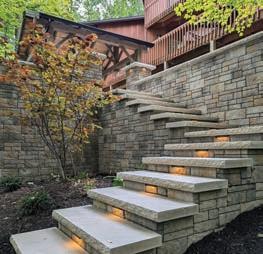


AWARD OF HONOR #1 Landscaping Quadax, Inc.
THANK YOU TO THIS YEAR’S CATEGORY SPONSORS











GOLF REGISTRATION OPENS SPRING/SUMMER 2021




Each year, the OLA makes available scholarship monies for selected students who are interested in pursuing horticulture in college. Those eligible recipients/applicants include high school seniors who are enrolled in a horticulture program, as well as college students currently studying horticulture. Congratulations to this year’s scholarship recipients!
JOSHUA HACKBARTH
$3,000 SCHOLARSHIP
A sophomore at Cuyahoga Community College (Tri-C), Joshua has been working three jobs while maintaining grades high enough to have him on the Dean’s list. For two years, he has been running his own landscape business. Joshua’s primary focus is completing his degree while expanding his company.
EMILY JAMIESON HENSCHEL
$2,500 SCHOLARSHIP
In her second year at Tri-C, Emily maintains a 4.0 GPA and is a member of their NCLC team. She competed in both the Robotics & Technology in Landscape Design & Maintenance and Employee Development competitions. She is also VP of the recently established Tri-C Ohio ISA Student Chapter.
KAITLYN TORRES
$1,500 SCHOLARSHIP
Kaitlyn is enrolled in the Plant Science and Landscape Technology program at Tri-C. In 2024, she took part in the NCLC where she placed 3rd in the Irrigation Troubleshooting contest. She currently works at Husney’s Landscaping & Irrigation and is looking forward to graduating in the spring of 2025.
JESSICA DEVENEY
$1,000 SCHOLARSHIP
Jessi is in her second year of Tri-C’s Plant Science & Landscape Technology program. She participated in the Irrigation Assembly and Landscape Maintenence Operations events at NCLC in 2024. She is currently a horticulture intern at Cleveland Botanical Garden and is enjoying it very much!

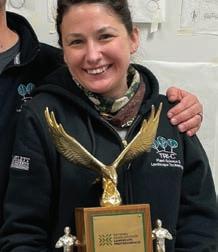

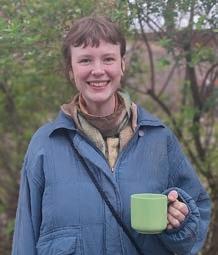


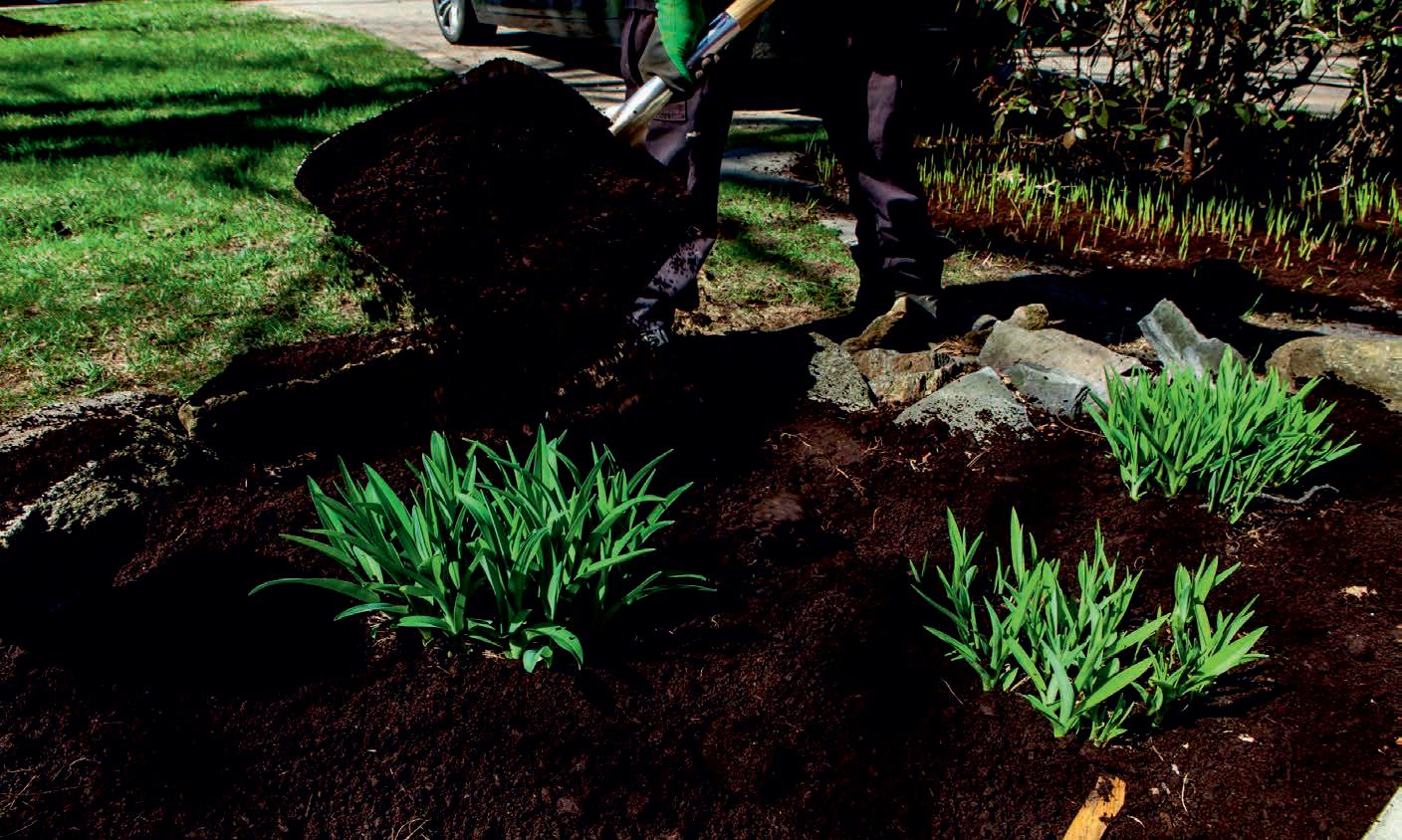








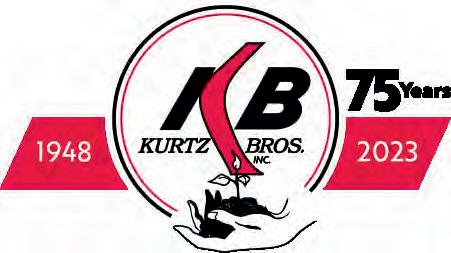

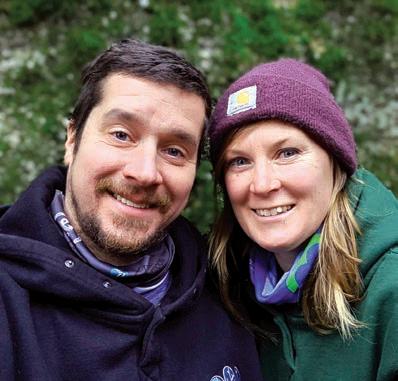
JIM FUNAI, PhD
Cuyahoga Community College
SHELLEY FUNAI, LIC
Stan Hywet Hall and Gardens
Here’s a plant for our native enthusiasts! Ranging from states east of the Mississippi up into Ontario and Quebec, and covering all our great state of Ohio, we were reminded of this native beauty while bird watching from our kayaks on West Branch Reservoir, located near our home in Portage County. As we paddled up one of the tributaries lamenting over the abundance of invasive Olives (Elaeagnus), Honeysuckles, and multiflora, there rose a patch of green shrubs with white flowers.
These flowers – about 2 inches across in flat topped clusters (corymb) – have been referred to as “effective but not overwhelming” by Dr. Dirr. He’s gone as far to say, “about anything is better than a Physocarpus.” This was stated in his 1990 book (green cover) and the 1998 version (brown book) which was brand new when we were in college. By the last (6th) edition published in 2009 (yellow cover), he relented that with newer cultivars and the ability for this shrub to grow in all kinds of conditions, it should be upgraded to “an adaptable landscape plant.”
While these shrubs are aethetically pleasing to us, it’s understandable that with their green leaves and shorter bloom
time, followed by non-ornamental fruits and underwhelming fall color, they aren’t currently tipping the scales for many of us in the landscape design/build business.
Looking back 30 years to Dirr’s Green Edition, there were only a few cultivars of Physocarpus on the market. Both were dwarf and both were gold/yellow leaved. ‘Dart’s Gold’ and ‘Nugget’ were very similar in dwarf habit in the 5 foot range, compared to the easily 10 foot size of the native plants that emerged with yellow/gold foliage and would slowly fade to lime green.
In the later 1990s, a seedling grower in Germany discovered an oddity while walking his crop...
continued on page 30

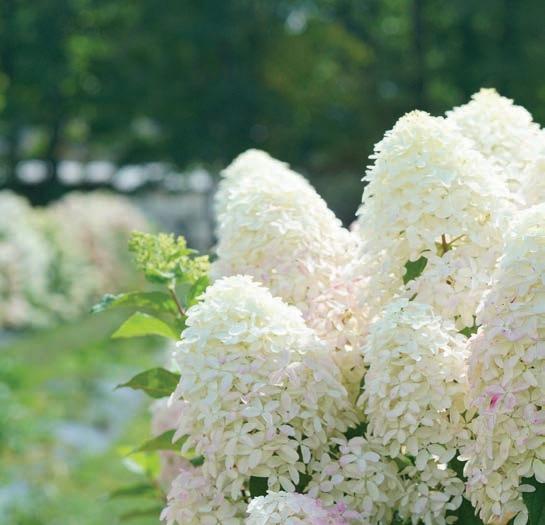
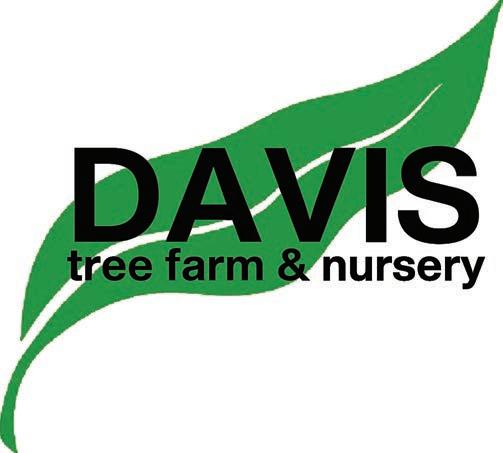



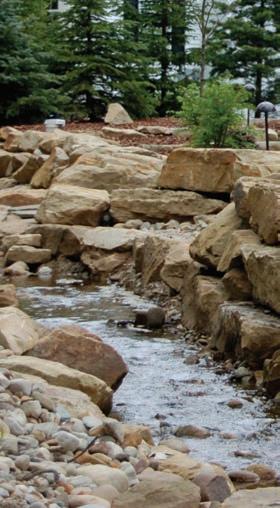
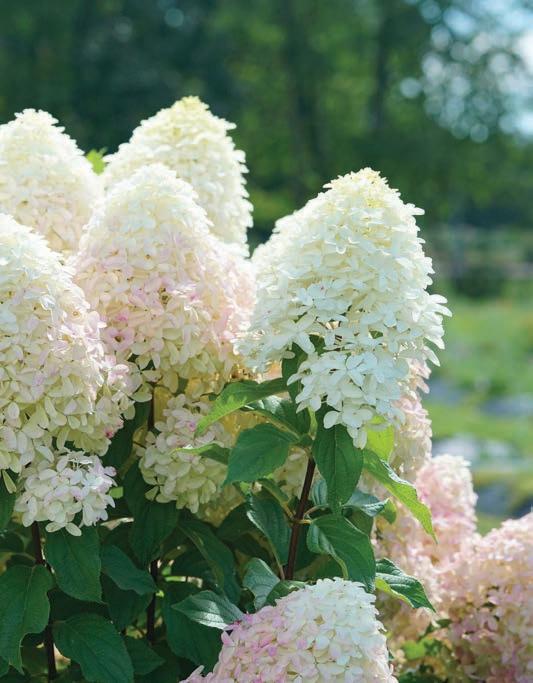
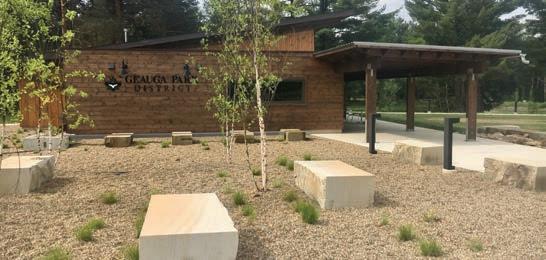

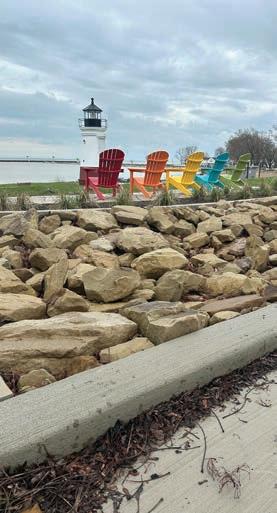
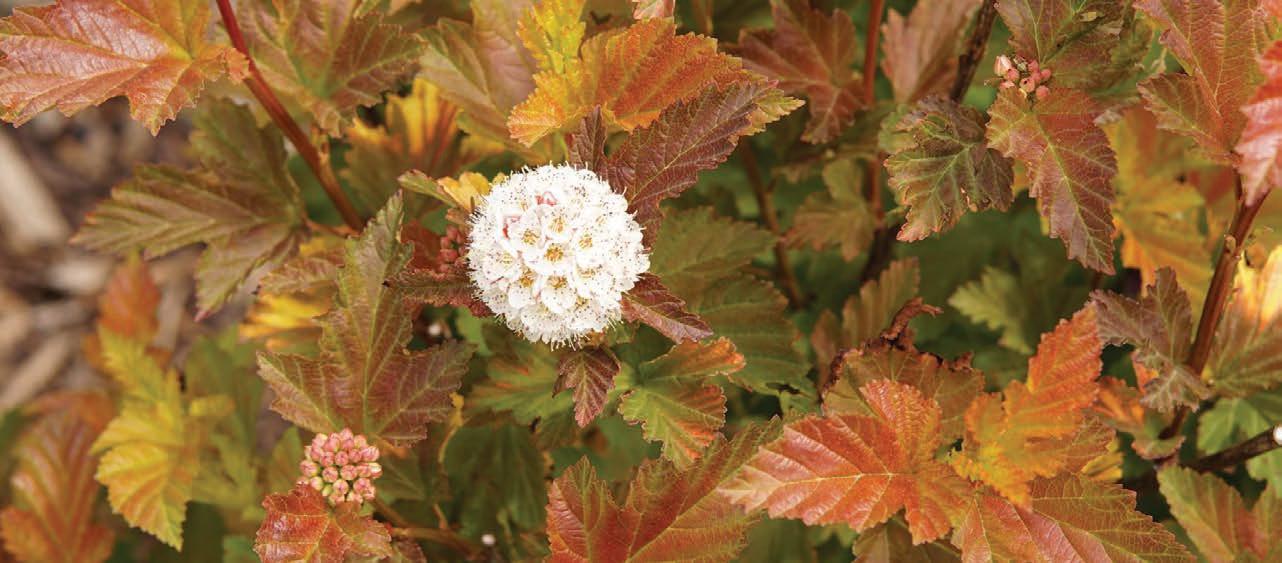
continued from page 28
One of his seedlings had dark burgundy leaves! This unexpected, burgundy-leaved ninebark was shared with friends, observed, and introduced as ‘Diabolo.’ What does the name mean? Well, imagine you are at a Renaissance Fair and there is a dude dressed as the court jester with two sticks tied at the tips by a 3 foot string. He is balancing and tossing around a toy that looks like two small round cones attached at the tips (kind of like an hourglass). That is a Diabolo – and why they call the plant that – no one knows.
Monrovia got ahold of the plant and filed a U.S. patent in January of 1998. The plant was named the ‘Monlo’ with the trade name of “Diabolo,” which most of us were used to calling it. The plant was an instant success, selling millions of shrubs worldwide due to the unique dark-burgundy foliage and pinkish tinges in the flowers. While this cultivar was revolutionary for the species, it had some downfalls for many landscapes, namely the large size in the 12 foot range, as well as susceptibility to powdery mildew. Diabolo also would send up reverted green shoots now and then which isn’t difficult to fix, but in today’s market is enough to dismiss a plant.
Proven Winners (Tim Wood, Breeder) crossed Diabolo (as the father) with ‘Nana’ – a dark green dwarf (as the mother) – and observed seedlings. Enter, ‘Summer Wine’ which didn’t revert, had minimal powdery mildew issues, and behaved in the 6 - 8 foot range.
In a nursery in France, there was a crop of ‘Diabolo’ sat next to ‘Dart’s Gold.’ What was discovered were seedlings with an orange-copper foliage that were eventually released as ‘Coppertina’. Soon after, the breeding gates were open and nurseries around the world were crossing and releasing plants left and right with little difference between many of them.
Today, the market is feverish with cultivars, but it seems most growers have settled into a few selections they believe are best.
‘Ginger Wine’ is an improved version of ‘Coppertina’ that stays more compact, has improved orange new growth, and even has some ornamental value in the fruits. As a bonus, it is (for now) much more mildew resistant than ‘Coppertina’.
‘Tiny Wine’ was released to meet the current trends for compact shrubs and provides the deep burgundy foliage that adds quite the ornamental punch in our shrub borders. Flowers are still a nice pink tinge and fall color is certainly improved over the species.
‘Amber Jubilee,’ released from First Editions, has even better orange new growth than ‘Center Glow’ and great fall color.
‘Red Robe’ from Spring Meadow starts with yellow-orange leaves that “fade” to a deep burgundy red. This one stays a little larger – in the 6 to 8 foot range, yet can be a beautiful addition to the back of the shrub border.
‘Festivus Gold’ is another PW release that should be planted in every garden simply for the reference to Festivus (Seinfeld fans). It is an improved gold leaf cultivar staying in the 4 foot range.
Now, for the native plant purists, sorry, you’re stuck with green leaves, a large/unruly habit, minimal floral and no fruit impact, followed by a minimalist fall color. IF you can bring yourself to accept naturally occurring along with selective breeding techniques, then the world of this native plant really has come alive since Dr. Dirr first described these plants.
Jim Funai, PhD, is full-time faculty at Cuyahoga Community College, a NALP accredited associate of applied science in hoticulture degree program. He has a PhD in Landscape Engineering and Forestry and is a Licensed Arborist. Shelley Funai is Grounds Manager at Stan Hywett Hall and Gardens in Akron, Ohio, which offers a historic estate designed by Warren H. Manning and a beautiful manor house museum. She is Landscape Industry Certified in Ornamental Plant Care.


• Screened Topsoil (Stored in a hoop house on site.)
• Granite & Sandstone Boulders From 8” to 12’+ priced per ton and per piece on request. 1’-2’ granite and 2’-3’ granite available, presorted, for immediate pick up.
• Mixed Boulders (Available for immediate pick up.)
• Washed Gravel, Concrete & Mason Sand.
• Crushed Gravel & Limestone products available.

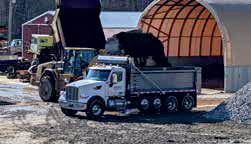
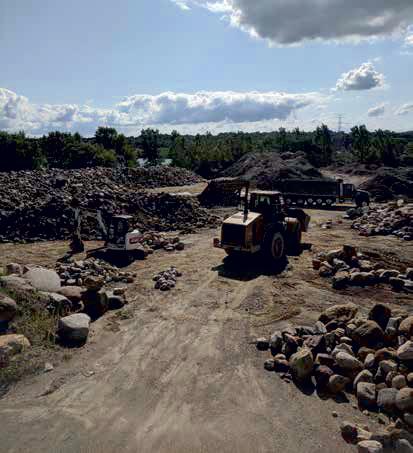

Growth can be bad for business. Don’t believe us? It may seem counterintuitive, but unchecked growth can cause serious problems for landscape companies. It’s like driving downhill without brakes… which we all know doesn’t end well. Whether you’re juggling more clients than you know what to do with or struggling to win the bids you want, the key isn’t growing—it’s scaling.
Not every landscape business is looking to grow exponentially. Maybe you have ambitious five-year goals, or maybe you’re content to maintain the status quo—growing just enough to stay profitable without dramatically increasing revenue.
No matter the vision for your business, manageable growth at some level is necessary to stay competitive.
Often, landscape companies find themselves growing without really trying. They keep getting referrals for new clients, which means hiring more workers, which means expanding their operations, and so on. This reactive approach can cause trouble when the right structures aren’t in place to manage it.
That’s the difference between growth and scaling. Growth can happen on its own. Scaling is something you plan for.
On its own, growth can be good or it can be overwhelming. Scaling, however, allows you to take control of your growth by creating and implementing plans to achieve your goals.
Thankfully, you don’t need a business degree to come up with a plan that allows you to scale your company effectively.
.
There’s plenty of advice out there on how to scale a business. Some of it’s helpful, and some of it’s not. From our years of experience in the landscape industry, though, we’ve found the most important areas to focus on are:
• Processes
• Financial management
• Resource management
• Hiring
• Sales and marketing
• Delegating
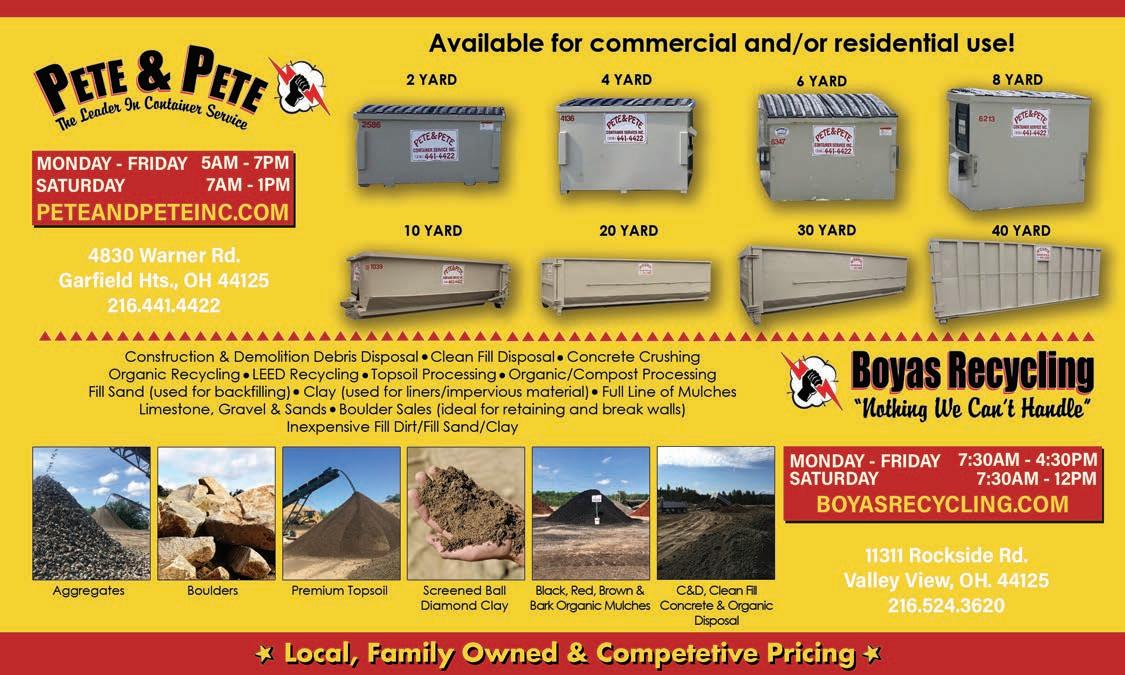
Processes are the things that enable you to successfully operate your business. Don’t be fooled by pseudo processes, though. To have a sound structure that can grow alongside your business, you need reliable, repeatable, “good” processes.
Often, pseudo processes rise up within a company as it grows to keep things running. Anything that’s undocumented or lives in someone’s head, though, is not a good process.
For example, you might just know that leads from a certain source are always handled differently from most leads, which you also know are dropped into a particular spreadsheet saved in a particular place on the company’s shared network. Or your account managers may have details about their properties stored in personal memos, but if they were to leave the company, that knowledge would leave with them.
Processes are like the foundation of a house. When they’re sturdy, they hold things together and give you a structure to build on. When they’re not, you’ll be at constant risk of the whole thing falling apart.
So what makes a good, sturdy process? Good processes are designed to standardize operations across your company. They’re built on systems that allow you to manage your work as efficiently and profitably as possible. And in 2022, it’s hard to have high-quality systems without robust business management software.
For Minnesota-based Backyard Reflections, that means handling all new business leads the same way in Aspire, building early construction estimates for clients to set clear expectations, and using flowcharts to delineate responsibilities for different roles.
Another multimillion-dollar landscaping company, Gachina Landscape Management, has completely transformed its processes by creating end-of-month reports and standardizing work ticket activities.
Well-designed processes enable your business to keep running and growing efficiently, regardless of turnover, changes in leadership, or shifts in the market.
continued from page 33

As a landscape business owner, you’re intimately familiar with every line of the company budget. You know where dollars are supposed to be spent, but tracking where they actually go throughout the year might prove more challenging.
We’ve found that most landscape businesses underestimate their job costs by at least 1% and their cost per labor hour by at least 50 cents, which leads to $96K in losses for a company with $6 million in annual revenue. Reviewing numbers regularly (and being able to trust them) is absolutely critical to scaling your business.
Green-industry consultant Jeffrey Scott writes that, for each of his clients, he starts by asking them to rank themselves according to how often they look at their financial data. Scores range from one (waiting until the end of the year to see the numbers) to five (reviewing finances monthly and operations reports weekly). One of the most common mistakes he sees is failure to view reports and evaluate performance as frequently as is needed to maintain healthy profit margins.
In addition to keeping a close eye on finances and cash flow, carefully managing resources like equipment and labor can help landscapers stay in control of their businesses.
Labor is the industry’s biggest expense, so finding ways to make your billable hours as efficient as possible can help keep a tight rein on your margins. This means less time spent in the shop or on the road, and more time spent getting work done on the job site.
When it comes to equipment management, cleaning, maintenance, and storage procedures can help ensure the longest lifespan possible.
Hiring can be a difficult area for landscape businesses, but it’s critical to maintaining a healthy and thriving business in the services industry. You need reliable employees who work hard, represent your company well, and stick around long enough to deliver a high return on your investment in their training and onboarding.
As Clarke Ramsey of Le Perv Landscape says, sometimes this just means breaking down and offering higher wages. Many business owners fear they can’t afford to offer a higher hourly wage, so they end up with lower quality workers, which affects customer satisfaction and crew efficiency, which stifles profitability, which prevents them from being able to hire better workers… and on it goes.
continued on page 36

Since 1986, VanCuren Tree Services has been Northeast Ohio’s complete tree care specialist. We provide comprehensive services for any residential, commercial, or utility tree care need.
The tree professionals at VanCuren Tree Services have helped home and business owners throughout Greater Cleveland and Northeast Ohio maintain the beauty, vitality, and safety of their trees.
We are proud to offer a full range of tree care services, from tree and stump removal to storm damage clean up to utility work and beyond.


To find out more about what VanCuren has to offer, visit our website at www.vancurentreecare.com, or call us at 440.338.5005 today for a free consultation.
• Complete Tree Maintenance Programs
• Certified Arborists on Staff
• Tree Removal
• Tree Trimming
• Land Clearing
• 178’ 50 Ton Crane
SALES REPRESENTATIVES:
Michael Sowul, Certified Arborist
James DiRosa, Certified Arborist
David R. Van Curen
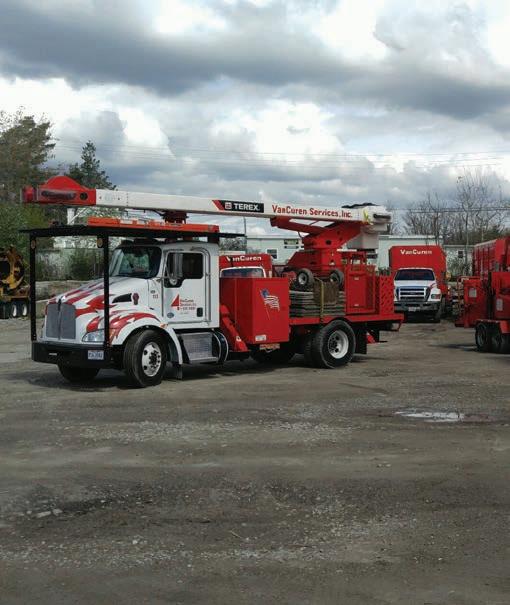
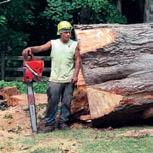

• 75’ Bucket Trucks
• Deep Root Fertilization
• 24-Hour Emergency Service
• Stump Grinding
• Tree Moving
PHONE: 440.338.5005
FAX: 440.564.9319

continued from page 34
Breaking the cycle might mean looking for ways to adjust expenses to prioritize paying a competitive wage.
And once you’ve got a team of great employees, communicate with them about the company’s overall performance and expectations for each staff member. This, along with creating a fantastic culture, can help employees feel more connected to your business—ultimately retaining more of them.
Of course, it’s hard to scale your business effectively without a solid sales and marketing strategy. When you’re doing great work, a lot of new business comes in from referrals, but relying solely on referrals doesn’t allow you to control the kinds of clients you pursue.
The first step in evaluating your sales plan is to determine the kind of leads you want. Are you interested in moving from a residential market to a commercial one? Or in taking on more maintenance contracts instead of design/build projects?
Decide where you’d like to take the business, and then come up with a plan for reaching that goal. Maybe you need to start saying “no” to some jobs to pursue the kinds of work you want. Maybe you need to hire account managers with a particular set of experience or create a special offer for potential customers who meet your criteria. Or maybe you just need to start with a small investment in digital marketing to bring in new customers from your target audience.
Whatever those next steps are, make sure your sales and marketing efforts are aligned with the way you want to scale your landscaping services.
It’s hard to let go. Every entrepreneur or business owner with a growing company understands this.
Whether you started the small business yourself or took over from someone else, you probably feel a deep connection to (and responsibility) for it. Delegating tasks or even turning over decision-making power to anyone else can feel like a mistake. After all, no one can do it like you because no one understands the business like you do, right?
It took John Puryear of Puryear Farms 20 years and a lifethreatening medical emergency to realize he couldn’t think like this anymore. He quickly changed his business model and distributed responsibility more evenly among his employees. Decisions didn’t have to run through him anymore, but he was confident in his staff and the processes he had put in place over the years to keep his business running like clockwork. He found that delegating some of the work didn’t necessarily mean losing sight of how the business was doing.
This article was written by Kim Oswalt and appeared on Aspire’s business management blog, located at youraspire.com/blog. Since 2013, Aspire has helped revolutionize the landscape industry by empowering contractors to transform the way their businesses operate.
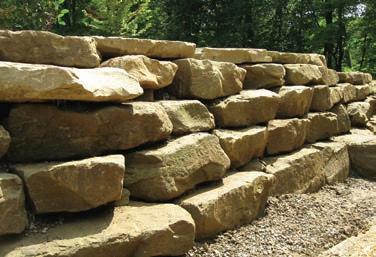
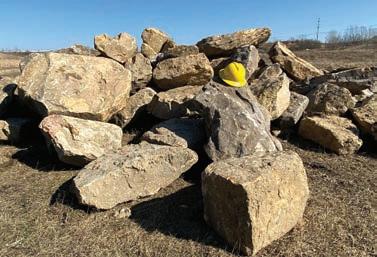



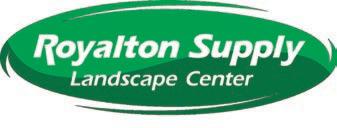

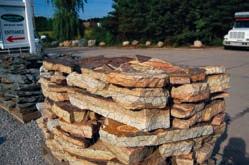
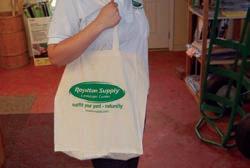


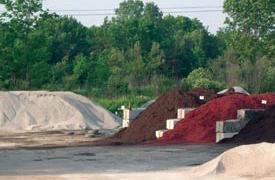

Where you are today is a result of your passion for the business you have built. The landscape industry is experiencing a wave of consolidation — are you ready?
The lawn care industry is riding a wave of consolidation and sales as owners approach retirement age and, in many cases, navigate the next generation’s lack of interest in taking over the family firm. Other owners may be aiming to take advantage of the current opportunity to sell at a favorable price. As many landscape owners are sole proprietors, it’s critical to plan ahead for who will take the reins in the future, as well as identify how to replace the income they rely on, post-sale.
If you are considering a sale, preparation is key to a successful outcome for you and your family. In fact, according to a 2023 UBS Survey, 81 percent of business owners wish they had spent more time preparing for the sale of their business.
Mistakes to avoid when approaching a potential sale can include:
Unclear valuation: Ensure you have an independent valuation of your business before beginning the sales process so you are not surprised by the market reality of your company’s value; take the time to gain a sense of where similar transactions have fallen financially.
Inadequate income: Have a solid understanding of how you will replace your income after the sale is completed, including
how much capital you will need to generate acceptable income in the future and how much you need financially to maintain your lifestyle.
Unplanned expenses: Be sure to calculate in advance and plan for any expenses that were once covered by the business and which will now come out of household spending.
To help clients avoid mistakes like these and strategically approach the sales process, Gerry McGinley, a Managing Director and Financial Advisor at UBS Wealth Management Americas with over 30 years of industry experience, recommends involving a financial advisor early on. “The inclusion of an advisors brings the most value prior to a sale, both by helping an owner understand what can be done to help improve the value of the business before it is offered for sale and outlining solutions to maximize the payout to the owner,” McGinley says. “Value could mean more money, better terms or maintaining some sort of control for you or a family member.”
McGinley also advises owners exploring a sale of their business to focus on the following:










continued from page 38
Know the marketplace: Arrange for an independent valuation of your business and gain a sense of where similar transactions have been priced.
Build a team: Assemble a team of advisors who collaborate well and can help manage and complete the sales process effectively.
Create a succession plan: Research potential buyers and understand the options available to you, your family and employees. In addition, consider a variety of exit strategies, such as transferring the business to family or employees, selling the company privately or publicly, or liquidating the business.
Develop a comprehensive financial plan: Conduct in-depth financial planning meetings before the sale of your company to help reduce taxable impact, which can maximize net proceeds and drive more money to the people and causes you care about. A well-considered financial plan also can identify a potential wealth gap between the amount you receive from the sale and the income you and your family need. Make
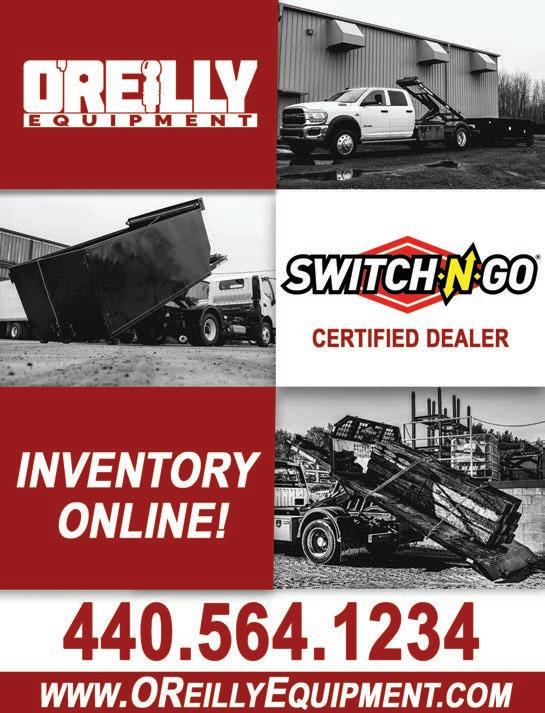
sure to include estate and legacy planning strategies as part of these conversations.
Finally, be sure to consider your next chapter after the sale of your business. There is an emotional side of the exit, which merits as much planning as the financial side. Consider how you will spend your time and energy going forward, both socially and professionally. It is important to look ahead to what might take the place of your business once the sale has been completed, whether a new venture, not-for-profit work, investing or supporting your children’s businesses.
According to the 2023 National State of Owner Readiness Report by the Exit Planning Institute, “Historically, personal planning has been the most neglected aspect of exit planning and tends to be very emotional in nature…There has been a significant shift in who owners see as their most valued advisor.”
Exiting successfully starts with a winning team and a solid succession plan.
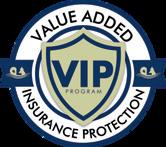






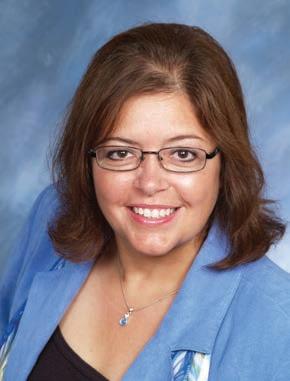
SANDY MUNLEY Executive Director / OLA
Dear Members and Friends of the Ohio Landscape Association,
After 32 incredible years of serving as the Executive Director of the Ohio Landscape Association, I am announcing my retirement, effective July 2025. This decision comes with a mix of emotions as I look back on the countless memories, achievements, and relationships that have defined my journey with this amazing organization.
The Ohio Landscape Association has been more than just a profession for me; it has been my passion! The people I have met and worked with over the years have become like family. Your dedication, support, and camaraderie have been the driving forces behind our collective success, and I am deeply grateful for the opportunity to have been a part of this community.
I would like to thank Jeff Barker and the late Tom Emmett for recommending me for this position, and Mike Spena and Dan Connelly for hiring me. It has been quite a journey. Over the years, I have worked under 31 different presidents. I have been around long enough to see sons of past board members take roles on our board.
When I took this position, I never dreamed I would be traveling to Washington, DC leading an entourage of members to speak with legislators, but I have – multiple times a year for
about 25 years. I never dreamed I would serve on the board of national associations, let alone have the opportunity to serve as the president of the Nursery and Landscape Executives of North America for 2 years. I have been very blessed with personal and professional growth. I have attended members’ parties, weddings, and funerals. I have been privileged to have members share confidential information with me. Members have always made me feel appreciated and respected. It doesn’t get much better than this!
As I prepare to step down, my heartfelt wish is for the Ohio Landscape Association to continue thriving and growing. I encourage each of you to continue supporting the association and each other with the same enthusiasm and commitment that has brought us to where we are today.
We have incredible staff members in Rick Doll and Melissa Roberts, as well as a great board of directors! Our educational events are selling out, sponsorship and advertising in The Growing Concern is up, and the membership is growing. Let’s keep these trends alive!
Thank you for the memories, the friendships, and the unwavering support. It has been an honor and a privilege to serve as your Executive Director. I look forward to another full year with the OLA and all of you!


Landscape
The Ohio Landscape Association is delighted to welcome the following new members to our association:
ASSOCIATE MEMBERS
R.A.K. Sales
7481 Hudson Park Dr. Hudson, OH 44236 (330) 612-6953
Bret Korcykoski
GSA Equipment 50 31st SW Barberton, OH 44203 (330) 825-2307
Adam Nichols
Weaver Craft Structures 1696 State Route 39 Sugarcreek, OH 44681 (330) 473-0132
Brian Schwartz




